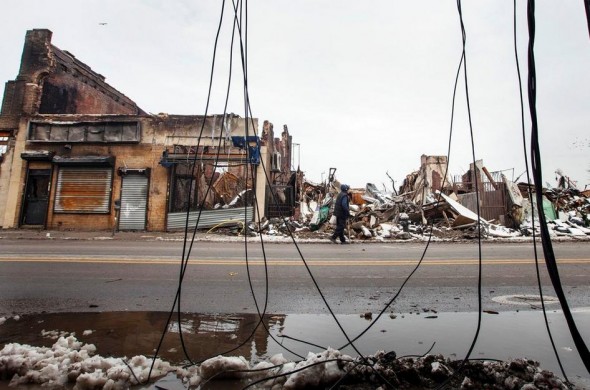(English) November 11, 2012
City, state and federal officials are trying to assemble a pool of vacant apartments in New York City that could supplement the city’s shelter system in housing hundreds if not thousands of families displaced by storm damage and power outages.
Although many people have clung to their homes despite having neither heat nor hot water, particularly in city housing projects in Coney Island and the Rockaways, officials are worried that another wave of people will seek shelter as temperatures fall and they can no longer bear the cold.
“There’s a huge fear that folks are going to be displaced for the medium and long term,” said Mathew M. Wambua, the city’s housing commissioner. “We feel a real imperative to have something in place when the second surge comes.”
Officials have discussed a variety of ways to accelerate rebuilding, including using modular housing. But meetings in New York last week involving city and state officials focused on creating a clearinghouse that would match displaced families with vacant apartments.
At a meeting in Manhattan on Wednesday evening, Shaun Donovan, the federal Secretary of Housing and Urban Development, told real estate executives, “You really need to help out,” according to one executive who was present. The meeting, real estate executives said, was one element of a White House rebuilding program that President Obama is expected to announce on Thursday in Manhattan for New York, New Jersey and possibly Connecticut.
Developers and landlords expressed a willingness to pitch in, but they also raised some issues that needed to be addressed first. That led to lengthy meetings on Thursday between state and city officials and members of the Real Estate Board of New York, theRent Stabilization Association and the state Association for Affordable Housing.
They discussed creating a system by which people who apply to the Federal Emergency Management Agency for housing could be matched with landlords who have vacant apartments. The tenants would pay rent directly with a FEMA voucher, or obtain an apartment through an agency like the Red Cross.
In the New York area, FEMA provides about $1,800 a month in rental assistance for up to 18 months. That would cover most housing in Brooklyn and Queens, but developers said it would fall short of covering many units in Manhattan. The need for temporary housing remains, even in Manhattan, where the heating and electrical systems in complexes likeKnickerbocker Village on the Lower East Side were swamped with seawater. Electricity was restored to most apartments in that complex until an electrical fire cut power again.
Landlords raised a series of statutory and legal hurdles that would have to be overcome. In apartments that operate under the state’s rent stabilization laws, there is no provision for short-term tenants. Some building owners asked whether the government would indemnify them for apartment damages or legal costs if they were forced to evict a tenant.
“People want to do the right thing,” said Charles Dorego, senior vice president of Glenwood Management, a major Manhattan landlord, who attended the meetings on behalf of the Real Estate Board. “But they don’t want to inherit a pig in a poke. They asked for indemnity, although I don’t see how a government agency can do that.”
By Friday afternoon, officials had developed a proposal that they were beginning to circulate within the real estate industry and hope to unveil soon.
A spokesman for Mr. Donovan said they were on a fast track to devise a creative solution to the housing disaster, but they were not ready to announce any specifics.
It is unclear how many apartments might be included in the pool, given that the city’s vacancy rate is in the low single digits. Some landlords in Brooklyn and Queens called the Rent Stabilization Association on Monday offering apartments for families forced out of their homes. But by Thursday, they said many of those units were now occupied.
Richard LeFrak, whose family owns more than 10,000 apartments in New York and New Jersey, said he had no vacant units, after moving nearly 150 families from their damaged first-floor apartments. His buildings suffered “tens of millions of dollars in damage from the storm,” especially in Sheepshead Bay, Brooklyn, and Jersey City. “We’re so tight now,” Mr. LeFrak said.
Source: The New York Times


Deixe um comentário